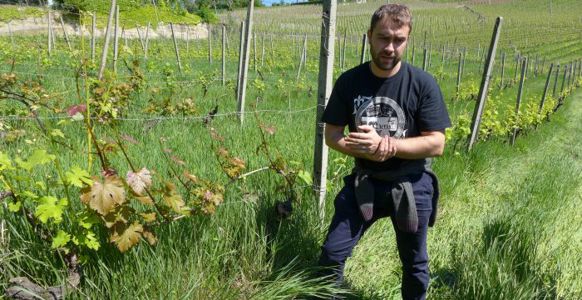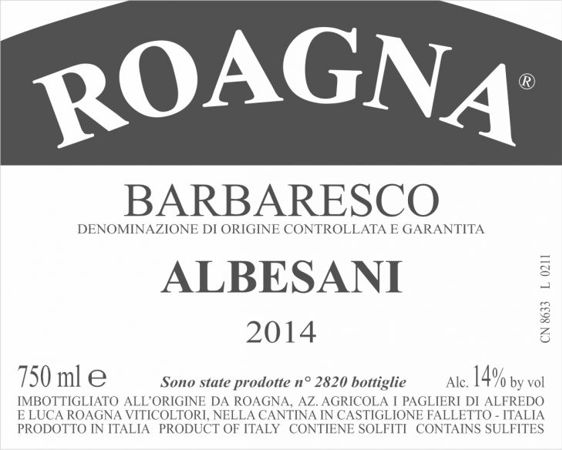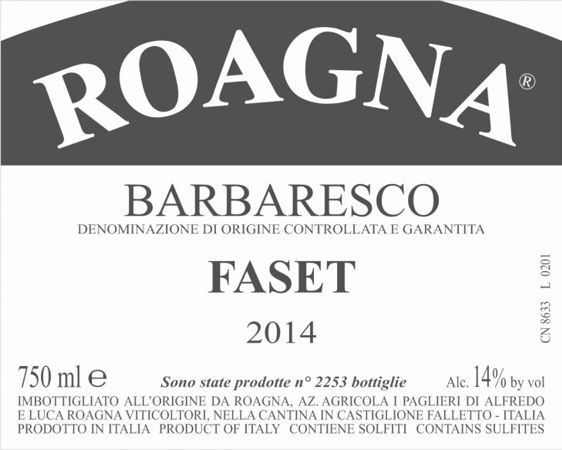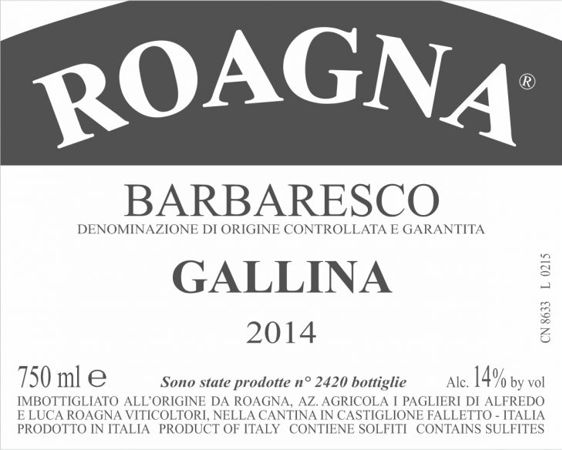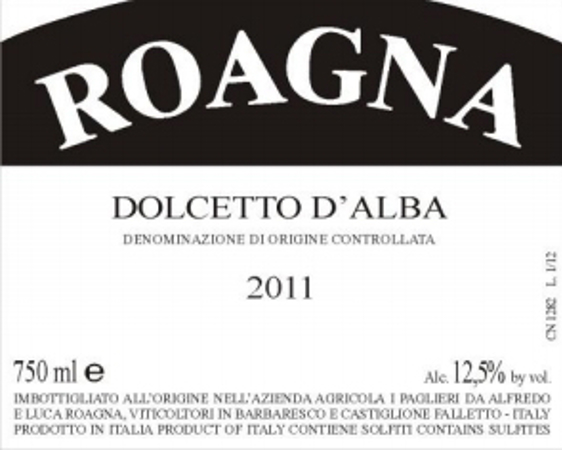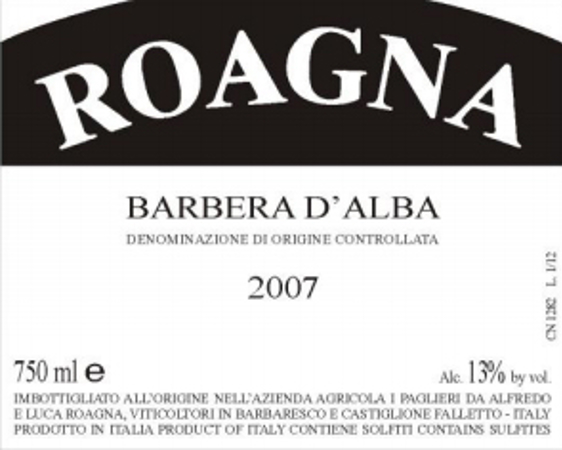Roagna

Roagna Gallery
Thank you to importer Louis/Dressner for this estate profile.
The Roagnas have been winemakers in the village of Barbaresco since the mid 1800’s. It was Giovanni and his wife Maria who moved their house and winery to its present location in the Paglieri hamlet, home to the famous Pajè vineyard. This plot is the foundation of the estate, which in all covers 6 ½ hectares, 1.83 of which are were purchased by the Roagna family in 1953.
Alfredo and Luca, father and son, now take care of the property. In 1990, they were able to purchase two slices of renowned vineyard sites of Castiglione Falletto in Barolo, la Pira and le Rocche. These came with a 15th century farm house directly above the vineyard which they renovated to become Casa Roagna, a bed and breakfast overlooking the vines. And over the years, Luca has been able to purchase all of the neighboring land on the Pira hill, effectively giving the family a monopole of the site. These acquisitons culminated in a new cellar to vinify and age the Barolo built above the vineyard and finished in 2012.
Most of the soil in the Langhe part of Piemonte is made of ancient seabed concretions. These are poor soils, where limestone, marl and sands dominate. The shape of the hills determine particular microclimates, and each terroir has its own characteristics. That’s why the Barolo and Barbaresco areas are unique in the Italian vine world: like in Burgundy, each vineyard has been defined, named, and is expected to have a particular character. Although all this was known by the Benedictine monks of the 13th century, it is only after the 1970’s that the practice of bottling by “ cru ” became the norm.
The Roagnas like to describe their style as traditional and innovative. Luca, born in 1980, pursued a high degree in oenology. But he sees his academic studies as a way to understand intellectually all the practices he has observed on the terrain and in the cellar, as implemented by his grandfather Giovanni Roagna, father Alfredo and mother, Luigina. All of the the vines in Barbaresco and Barolo are worked organically: no herbicide has ever been used, grass grows between the rows and only copper and sulfur solutions are used for treatment. The soils are never worked at any point and the vines are never trimmed back, giving them a tree-like appearance. In the spring and summer, it can truly look like a jungle.
Despite these practices, the Roagna do not seek any form of certification, as the approach is deeply personal and draws inspiration from a variety of sources including Rudolph Steiner and Masanobu Fukuoka.
Pajè is the main site for Barbaresco and La Pira for Barolo; both produce single vineyard expressions from vines between 25 and 50 years old as well as a Vecchie Vite ("Old Vines") bottling from vines 50 years and older. Their top Barbaresco is called "Crichët Pajè" and is only made in the best vintages from the vines at the top crest (crichët, in piemontese dialect) of the Pajè vineyard where by experience the grapes optimally mature. A number of other "crus" are produced in Barbaresco: Faset, Gallina and two Vecchie Vite labels: Montefico from a 0.29 hectare plot and Asili from a 0.22 hectare plot. The Nebbiolo grapes macerate for 30 to 100 days, according to their plot origin and the age of the vines, then are aged for up to 10 years in large or medium capacity botti of French oak. Because the Roagnas make so many different bottlings, there are many variations in the techniques they use in the cellar. For example, the Vigna Rionda grapes, from vines 40 to 60 years of age, are macerated for 40 to 50 days, then aged in oak botti for four years. The grapes that become "Pira Riserva" macerate for 80 to 100 days, then are aged for a minimum of five years and up to 10 years or more.
The Roagnas also produce a Langhe Rosso from the cru's younger vines (anything under 25 years old), Dolcetto d’Alba, Barbera d'Alba from grapes sourced from la Pira, Opera Prima (a blend of vintages of Barbaresco to make a drinkable, harmonious wine), a white called "Solea" from Chardonnay and Nebbiolo (juice without skin contact).
Background
- Name of Estate: Roagna
- Region: Piemonte
- Country: Italy
- Proprietor: Alfredo and Luca Roagna
- Size: 16 hectares
- Farming: Organic (Certified)
- Soils: Limestone, marl, sand
- Grapes grown: Nebbiolo, Dolcetto, Barbera, Chardonnay
- Fun facts: It's easy to spot a Roagna vineyard: look for high grass!
